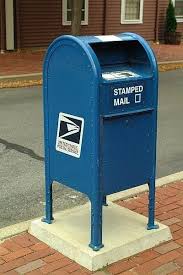The attempts are no longer dog-whistles — they appear to be a part of a transparent play to discredit a service that is critical to the 2020 election. The target: the United States Post Office (USPS) .
First, President Donald Trump has tried to starve the USPS of funding in general and ignored the critical funding need in the face of the economic disaster that is the COVID-19 pandemic. He has made no secret of his preference that the delivery of mail be privatized. He has publically announced that if Congress passes the much-need funding support, he’ll veto it.
Then Trump tried to discredit the USPS by claiming that it was the entity responsible for rampant mail fraud (more about that below).
Now, in another move to discredit the role of the USPS, the newly-appointed Postmaster General Louis DeJoy, a Trump political appointee and major Trump donor, has made what election-watchers are calling a “blatant move” to disrupt the work of the post office”.
A memo that went out to postal workers from DeJoy said that it was making changes to the system to “increase efficiency”, including closing offices, laying off staff, and changing operational processes. But those changes do not appear focused on efficiency. Instead, they are leaving millions of pieces of mail without being processed, in a deliberate attempt to change the way that workers process the mail. Over time, this move is likely to create an untenable backlog of mail.
“How do you increase efficiency by slowing down the mail? asked one postal worker. “How does that make sense?”
For generations, the postal worker’s mantra has been: “to sort, process, and get the mail out that day.” The USPS mission and worker pride that have been tied up in this mission, famously summed up in this saying commonly attributed to the USPS: ” Neither snow nor rain nor heat nor gloom of night stays these couriers from the swift completion of their appointed rounds”
But postal workers describe being told to stop in the middle of sorting and go home, leaving mail behind on docks and in sorting bins. The result in mailrooms from large cities to small rural post offices is a build-up of mail — letters, bills, packages, urgently-needed medicines, supplies that rural residents can’t buy locally and order in. And that’s just the beginning. Coming up — a politically-charged hot potato: mail-in ballots.

Chaffee County Clerk and Recorder Lori Mitchell, at work preparing for the Presidential Primary Election.
The delay, if it happens, appears to be by design. “This administration has come up with some pretty diabolical ways to divide and attack us but slowing down the mail, making people risk their lives to vote, this is a new level,” said U.S. Sen. Joe Manchin and a union leader this week.
The USPS reported a $4.5 billion loss for the quarter ending in March before the full effects of the shutdown sank in. Congress included $10 billion in funding from the U.S. Treasury for the USPS in the coronavirus relief package passed by Congress in March. The money was intended to help the Postal Service maintain essential services during the pandemic. But the new Postmaster General hasn’t touched it.
“Unfortunately, not only has little to none of that funding been utilized, you are now proposing the very cuts that we sought to avoid with that emergency line of credit,” said Manchin in a letter to DeJoy.
Regarding the claims by Trump that the USPS is part of a vast voter fraud conspiracy, it isn’t actually a thing.
“Everyone knowns mail-in ballots are a disaster,’ said Trump in a press conference this afternoon.
This is not true.
There is no evidence of voter fraud in the U.S. Vote by mail is not only a long-standing practice in the United States, but statistically, voter fraud in this country stands at .00006 percent, meaning — basically non-existent.
In other words, if you took the entire population of the United States (328.2 million) at .00006 there would be 200 people who commit voter fraud. You’re much more likely to get struck by lightning.
Five states conduct elections using an all-mail ballot format: our own state of Colorado, Washington, Oregon, Utah, and Hawaii.
With this format, ballots can be dropped off ahead of election day, and verification of their authenticity conducted prior to election day, making for smooth and prompt election result reporting. None of these states has ever reported problems with its balloting procedures and in Colorado, county clerks are pleased with the all-mail ballot election process.









As unnecessary as the change in leadership for our USPS is, the biggest concern remains: How can one person alone (U.S. President), make such an important, even life-altering decision affecting all U.S. citizens? How is one person (Postmaster General), selected solely by this President, able to make critical decisions alone, like not using approved funding for the USPS and hamstringing USPS efficiency by cutting back worker hours? This endangers many of us (of all political views) who must receive critical medications in a timely manner by post. If our government has a checks and balance system in place (Congress), why are we not hearing anything from them? Regarding Voting by Mail, the data history speaks for itself. (Well documented for AVV Jan Wondra). The only reason I can see to limit Vote by Mail is to accommodate a power-hungry autocrat wanting to steal an election!
I am beyond angry at the attack on USPS, Americans need the vital service. My concern is that I don’t see Congress doing anything to prevent the debacle.